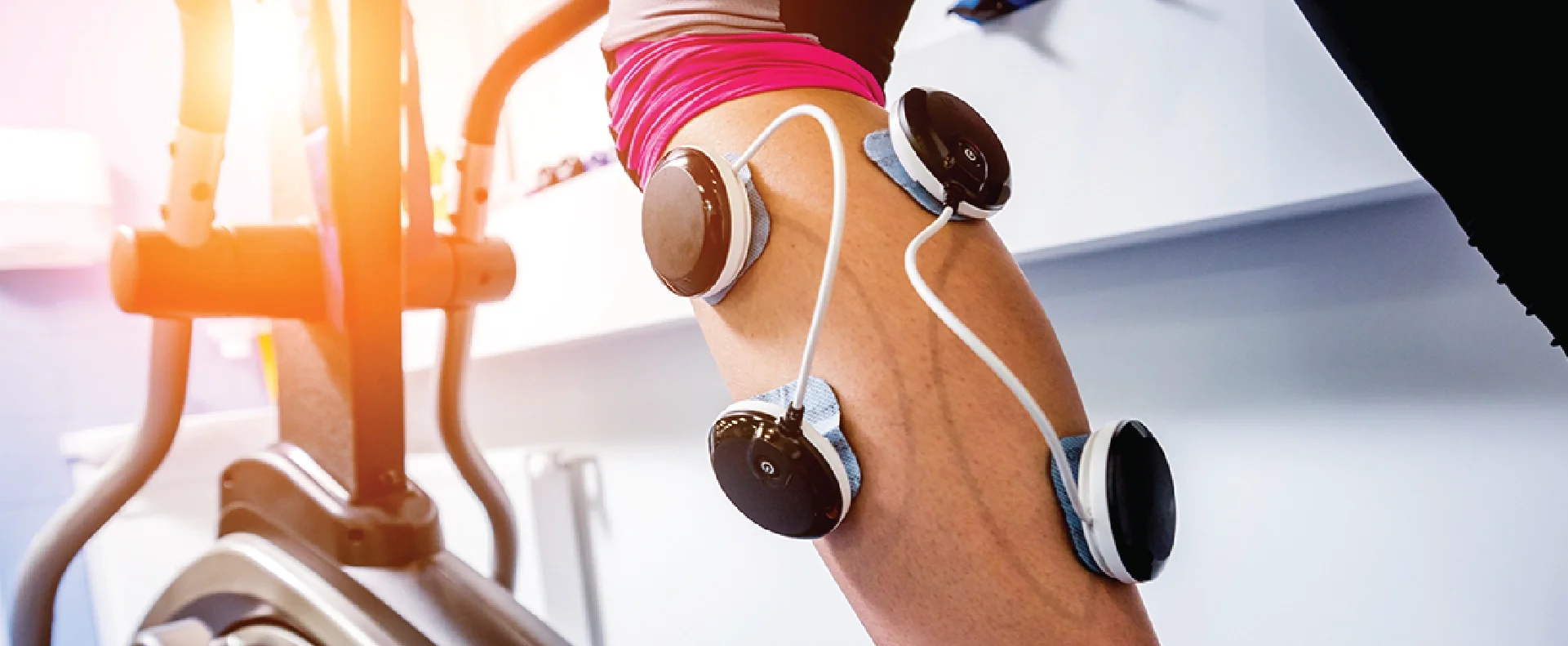Heat alone aids recovery, provides temporary pain relief, and decreases inflammation. In an infrared sauna, the far and mid infrared light waves provide an even deeper therapeutic experience than the heat in a traditional sauna that only heats the air. Infrared light waves penetrate the body to heat from within, penetrating the joints, muscles and tissues, and increasing circulation and blood flow.1
For proper healing, good circulation is critical. Red blood cells carry oxygen and nutrients to the site of the strain or inflammation, which helps to create new blood vessels and tissues at the site. The more red and white blood cells that can get delivered to muscles, the quicker they rebuild.
Experts recommend incorporating infrared sauna heat for recovery during the intense training periods to help athletes adapt to stress and improve recovery. Director of Sports Performance and Science for Sporting Kansas City professional soccer team, Joey Harty, uses the custom Sunlighten infrared sauna in the team’s world-class training facility as part of their athlete’s recovery protocol options.
“When you're in the hardest training period and you want to adapt to the exercise stimulus, heat is always your best friend,” Harty explains. “The increased circulation allows the body to go through the natural process of inflammation and helps the body recover from that inflammation because it's delivering more nutrients by letting the blood flow get where it needs to go.”
Infrared saunas offer the benefits of the heat without the discomfort and dangers of high heat traditional saunas. “What's really cool with infrared sauna compared to a normal sauna is you don't feel dehydrated after you leave,” explains Harty. “The temperatures aren't as intense as the typical sauna that you would see at most commercial gyms. The temperatures are a lot lower, and the infrared light penetrates deeper, so you're getting more of an internal heat in response as opposed to just an external heat temperature that causes fluid loss. The players get cellular healing from being inside the infrared sauna. It's really important for maximizing adaptation, as well as recovery.”

Watch more about how and why Sporting Kansas City uses Sunlighten infrared here.
A study published in The Journal of Athletic Enhancement also found that far infrared heat improves neuromuscular performance during intensive training2 for reasons beyond circulation. The experimental group consisted of 10 national level male power athletes. Over a 5-day period of strength, power, and technique training sessions, each athlete spent 40 minutes recovering in infrared. Test results found better CMJ height and peak power and a greater increase in the testosterone/cortisol (T/C) ratio between the pre- and post-measurements was significantly greater during the experimental condition than during the control condition. The study concluded that far infrared heat provides a useful tool to accelerate recovery, which can enable harder training and can further accelerate athletic development.
Sunlighten’s patented SoloCarbon® far infrared heaters have been found to be up to 99% effective in terms of far infrared absorption into the body. View our third-party testing here.
One of the ways that Harty helps Sporting Kansas City’s athletes determine when to use their infrared sauna for recovery involves educating them in how to feel the difference in metabolic and mechanical repair needs of their bodies.
Understanding what type of fatigue a player is experiencing guides what recovery protocol Harty recommends. He categorizes fatigue into two types—mechanical and metabolic—and then teaches the athletes how to assess which type they’re feeling.

“Mechanical fatigue involves sore muscles or tissue. Metabolic fatigue feels like heavy legs, a lazy feeling in your body, feeling a lack of energy, no pop when you’re going to run, but not necessarily sore,” says Harty. “If your body is feeling metabolic fatigue as game time nears, that's where we want a player to go into the infrared sauna, and maybe follow it up with the hot tub to get both heat modalities, but also the infrared sauna provides more benefits than just immersion in water.”
More and more research is being published about the benefits of near infrared (NIR) and red light (also known as photobiomodulation (PBM) or formerly “low level light therapy”) for muscle recovery and performance. PBM describes the use of red or NIR light to stimulate, heal, and regenerate damaged tissue. Both preconditioning (light delivered to muscles before exercise) and PBM applied after exercise can increase sports performance in athletes.3 In the present research, PBM has been shown to have valuable protective and ergogenic effects in 25 human studies, being the key to success for high performance and recovery, facts supported also by 22 animal studies.4 A review of research summarizes that PBM applied creatively and targeted depending on sport and size of the level of physical effort could perfectly modulate the mitochondrial activity and thus lead to remarkable improvements in performance.4
One of the foremost researchers on infrared, Dr. Michael Hamblin, published an article which found that red light and NIR can increase muscle mass after training, and decrease inflammation and oxidative stress.5 In this informative review, Hamblin explains the primary reason why using PBM on muscles is effective: the well-known stimulation of mitochondrial activity that occurs when red or near-infrared photons delivered to the tissue have been absorbed by cytochrome c oxidase. Muscles rely heavily on adenosine triphosphate (ATP), which is the biological source of energy needed for muscle work. Mitochondria produce ATP, and increased ATP levels are the main reason scientists have to explain the extraordinary effects of NIR and red light on muscle tissue.
In addition to the increases in energy metabolism and ATP synthesis, other biochemical mechanisms that explain the effects of PBM on muscle tissue include:
- stimulation of defenses against oxidative stress
- prevention and repair of muscle damage
- modulation of gene expression by activation of transcription factors
- possible increase in the excitability of muscle fibers
Another randomized, double-blind, placebo-controlled trial was performed with voluntary participation of 28 high-level soccer athletes.6 Several biomarkers were analyzed including maximum voluntary contraction (MVC), delayed onset muscle soreness (DOMS), creatine kinase (CK) activity, and interleukin-6 (IL-6) expression. The results found that pre-exercise light application significantly increased performance and improved biochemical markers for skeletal muscle damage and inflammation.
NIR is available in Sunlighten’s mPulse 3 in 1 saunas and NIR and red light therapy is available in our portable, hand-held lumiNIR® for targeted muscle recovery and temporary pain relief.
Flexibility is also important for performance and injury prevention. An independent study conducted at Auburn University of Montgomery showed a Sunlighten mPulse 3 in 1 sauna can increase flexibility up to 3x. The benefits of increased range of motion and greater flexibility include joint mobility, less friction in the joints, enabling joint function to diminish stiffness, and joint relaxation. View this study here.
Whether it’s your job as an athletic trainer, medical practitioner, or your desire as an athlete or health-minded person to find ways to make rest and recovery productive, infrared light therapy offers incredible support to help ensure that the human body is able to maintain optimal levels of physical fitness and well-being while also mitigating injury. It’s an incredible way to keep feeling better so you can continue doing more of what you love to do.



